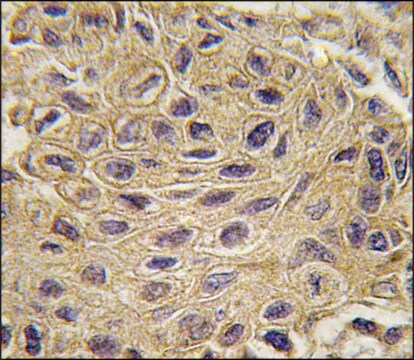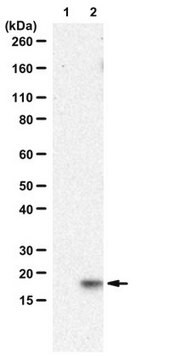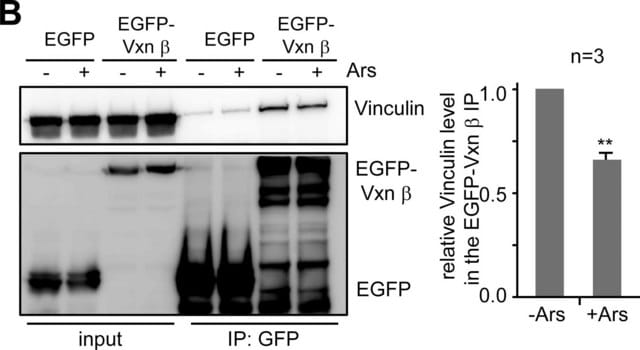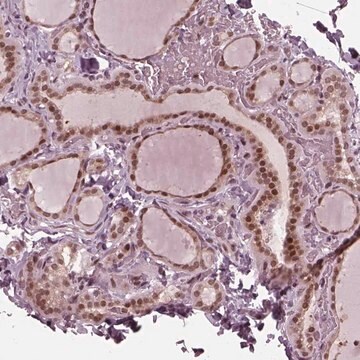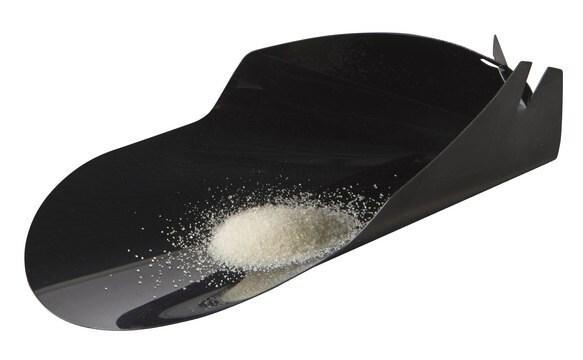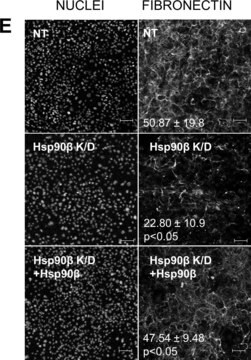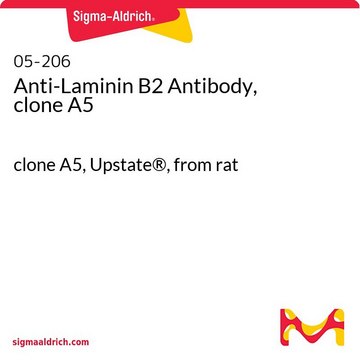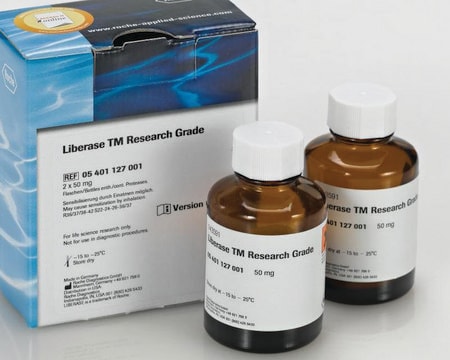ABS1627
Anti-CTGF Antibody, N-Term Antibody
from goat, purified by affinity chromatography
Sinônimo(s):
Connective tissue growth factor, CCN family member 2, Hypertrophic chondrocyte-specific protein 24, IBP-8, IGF-binding protein 8, IGFBP-8, Insulin-like growth factor-binding protein 8
About This Item
Produtos recomendados
fonte biológica
goat
Nível de qualidade
forma do anticorpo
affinity isolated antibody
tipo de produto de anticorpo
primary antibodies
clone
polyclonal
purificado por
affinity chromatography
reatividade de espécies
human
técnica(s)
neutralization: suitable
western blot: suitable
nº de adesão NCBI
nº de adesão UniProt
Condições de expedição
dry ice
modificação pós-traducional do alvo
unmodified
Informações sobre genes
human ... CTGF(1490)
Descrição geral
Especificidade
Imunogênio
Aplicação
Signaling
Growth Factors & Receptors
Neutralizing Analysis: A representative lot inhibited CTGF-stimulated collagen synthesis, but not CTGF-stimulated DNA synthesis, in rat kidney (NRK) fibroblasts (Grotendorst, G.R., and Duncan, M.R. (2005). FASEB J. 19(7):729-738).
Note: It is recommended that gel electrophoresis be performed under non-reducing condition to effectively separate CTGF N- and C-terminal fragments, as well as differentially glycosylated N-terminal fragments.
Qualidade
Western Blotting Analysis: 2.0 µg/mL of this antibody detected 1 ng of the N-terminal (1-180), but not C-terminal (181-349), fragment derived from baculovirus expressed human CTGF by chymotrypsin cleavage.
Descrição-alvo
forma física
Armazenamento e estabilidade
Handling Recommendations: Upon receipt and prior to removing the cap, centrifuge the vial and gently mix the solution. Aliquot into microcentrifuge tubes and store at -20°C. Avoid repeated freeze/thaw cycles, which may damage IgG and affect product performance.
Outras notas
Exoneração de responsabilidade
Não está encontrando o produto certo?
Experimente o nosso Ferramenta de seleção de produtos.
recomendado
Código de classe de armazenamento
12 - Non Combustible Liquids
Classe de risco de água (WGK)
WGK 1
Certificados de análise (COA)
Busque Certificados de análise (COA) digitando o Número do Lote do produto. Os números de lote e remessa podem ser encontrados no rótulo de um produto após a palavra “Lot” ou “Batch”.
Já possui este produto?
Encontre a documentação dos produtos que você adquiriu recentemente na biblioteca de documentos.
Nossa equipe de cientistas tem experiência em todas as áreas de pesquisa, incluindo Life Sciences, ciência de materiais, síntese química, cromatografia, química analítica e muitas outras.
Entre em contato com a assistência técnica